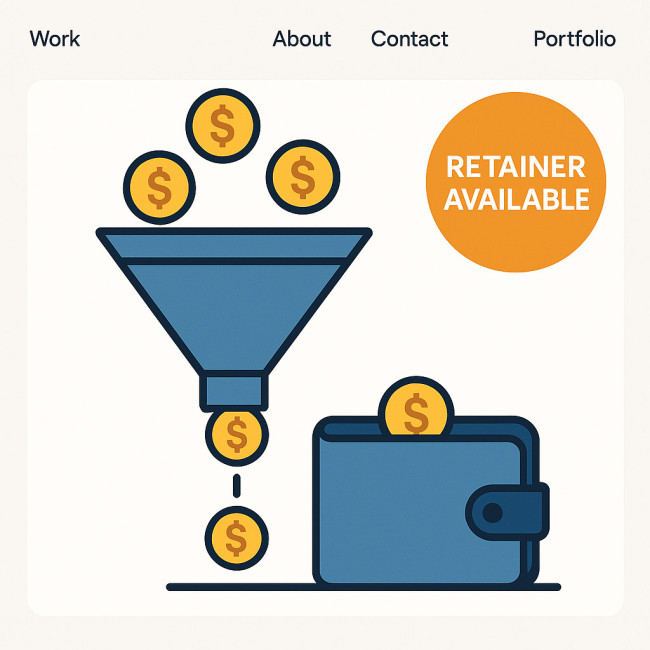Draftsman freelance retainer agreements: reliable income for long projects
Tired of unpredictable cash flow? A well-structured freelance retainer agreement can give any draftsman steady income, clearer project scope and stronger client loyalty during multi-phase builds. This guide walks you through the clauses, pricing models and negotiation tactics that lock in stability without limiting your creative freedom.
Why a retainer beats one-off orders for draftsmen
Architectural and product cycles rarely end after the first set of drawings. Revisions, permit comments and as-built updates keep rolling in. A retainer translates that continuous need into predictable revenue. You reserve a block of hours or deliverables each month; the client secures priority access to your drafting skills.
Typical pain points solved
- Cash-flow gaps disappear because invoices go out on a fixed schedule.
- Scope creep is contained by a pre-agreed task list and overage fees.
- Resource planning improves; you know exactly how many billable hours remain for other clients.
Key components of a solid draftsman freelance retainer agreement
Use concise, active language in every clause. Below are the essentials you should never skip.
| Clause | Purpose | Drafting Tip |
|---|---|---|
| Scope of work | Defines drawings, revisions and file formats covered. | Reference industry standards (DWG, IFC, PDF) and layer naming rules. |
| Monthly allocation | Sets hours or sheet count included in the fee. | Add rollover limits to avoid unused time stacking forever. |
| Priority level | Guarantees response times for RFIs and mark-ups. | Differentiate same-day and 48-hour turnaround tiers. |
| Overage rates | Covers extra work beyond allocation. | Price 10–20 % higher than retainer rate to encourage accurate planning. |
| Exit terms | Explains notice period and hand-off deliverables. | Align with payment calendar; 30 days is industry norm. |
Pricing models that win both sides
The sweet spot balances reliable income for you and cost predictability for the client.
1. Hour-bank retainer
The client prepays 20–60 hours monthly. You track time in detail and report remaining hours each Friday. Ideal for renovation projects where feedback volume is unknown.
2. Deliverable-based retainer
Perfect for subdivision roll-outs. For example, “five permit-ready sheets plus two 3D views per month.” Overage triggers per-sheet fees at the agreed higher rate.
3. Hybrid retainer
Mix a minimum hour block with deliverable milestones. This keeps the door open for urgent RFIs while giving you a tangible output target.
Calculating a fair retainer fee
Multiply your standard hourly rate by expected hours, then discount 5–15 % for guaranteed booking. Never go lower unless the client offers strategic exposure like portfolio rights on a landmark project. If you need help benchmarking rates, review the rush-fee guide for draftsmen.
Negotiation tactics that protect your margins
- Lead with metrics. Show how earlier retainer clients cut revision time by 30 % thanks to consistent collaboration.
- Offer a trial month. Let risk-averse firms test the workflow before signing a six-month term.
- Anchor high. Start with the hybrid model. If the client pushes back, scale down to hour-bank without heavy discounts.
- Leverage urgency. Point out that your upcoming workload is filling fast—scarcity motivates faster sign-off.
Workflow tips to deliver on retainer promises
A retainer only works if efficiency follows. Streamline your process:
- Standardise file naming from day one. The guide on remote onboarding for draftsmen details best practices.
- Create a shared dashboard in Trello or Notion to log tasks against the monthly allocation.
- Send a Monday priorities email and a Friday progress snapshot. Consistency builds trust.
- Archive versions in cloud folders with read-only access. This reduces ad-hoc requests for older drawings.
Mitigating common retainer pitfalls
Even seasoned drafters can hit snags. Stay ahead with these safeguards:
- Scope drift: Freeze the model at each milestone. New design directions become change orders, not “minor tweaks.”
- Payment delays: Invoice in advance or set auto-debit. Include a 5 % late fee after seven days.
- Under-utilisation: Offer rolling over up to 20 % of unused hours. Anything above expires—motivating clients to brief on time.
- Burnout risk: Block personal R&D slots in your calendar. Articles like skill mapping for draftsmen show why upskilling matters for long-term sustainability.
Case study: six-month subdivision project

A mid-sized architectural firm needed continuous drafting for a 40-unit subdivision. They signed a hybrid retainer: 40 hours plus three marketing-ready renders monthly at €2 800. Over six months, total billing reached €16 800 with only €600 in overages. The firm reported 25 % faster permit approvals thanks to consistent file standards. Meanwhile the draftsman locked in income equal to one extra client without prospecting time.
How retainers unlock strategic upsells
Consistent collaboration uncovers extra needs: 3D phasing animations, material schedules or BIM coordination. Because trust already exists, your proposal wins faster. When the firm requested a site animation, the draftsman quoted €4 500 and secured approval within 48 hours—no competitive tender.
Integrate retainers into your marketing funnel

Highlight the benefits on your portfolio or in talent directories. For example, the collaboration-ready draftsman listings on Artfolio often rank higher when they show “Retainer Available” tags. Couple that with behind-the-scenes posts of your monthly dashboard to visualise transparency.
Checklist before you sign
- Clear task list and file deliverables
- Monthly allocation and overage rate
- Payment schedule, late fees, tax obligations
- Communication cadence and preferred channels
- Exit clause and intellectual property rights
FAQ
- How long should a draftsman freelance retainer agreement last?
- Three to six months offers enough runway to see mutual value without locking either party into a full-year commitment.
- Can I offer different retainer tiers?
- Yes. Many draftsmen package bronze, silver and gold plans with ascending hour banks and faster response times.
- What if the client consistently exceeds allocated hours?
- After two consecutive months of overages, propose moving to the next tier or revising the agreement mid-term.
- Do retainers hurt my chance to take short gigs?
- Not if you plan capacity. Retainers stabilise baseline income so you can choose quick projects more selectively.
- How do I transition an existing client to a retainer?
- Audit their last six months of work, average the hours, and propose a plan that saves them 5–10 % versus ad-hoc billing.
Take action: secure your next retainer now
Review your past three projects, identify clients with recurring needs and send a concise proposal today. If you need inspiration, see how open studio events convert into drafting commissions. A single email could transform unpredictable one-offs into six months of reliable income.











